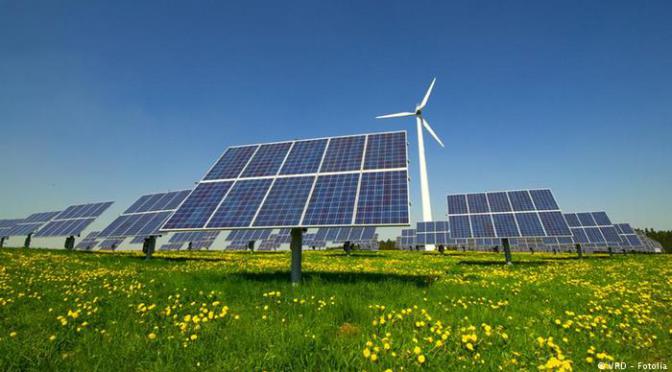This year has brought a significant shift in the generating cost comparison between renewable energy and fossil fuels, according to detailed analysis by technology and region, published this week by Bloomberg New Energy Finance.
The research company’s Levelised Cost of Electricity Update for the second half of 2015, based on thousands of data points related to individual deals and projects around the world, shows that onshore wind and crystalline silicon photovoltaics – the two most widespread renewable technologies – have both reduced costs this year, while costs have gone up for gas-fired and coal-fired generation.
The BNEF study shows that the global average levelised cost of electricity, or LCOE, for onshore wind nudged downwards from $85 per megawatt-hour in the first half of the year, to $83 in H2, while that for crystalline silicon PV solar fell from $129 to $122.
In the same period, the LCOE for coal-fired generation increased from $66 per MWh to $75 in the Americas, from $68 to $73 in Asia-Pacific, and from $82 to $105 in Europe. The LCOE for combined-cycle gas turbine generation rose from $76 to $82 in the Americas, from $85 to $93 in Asia-Pacific and from $103 to $118 in EMEA.
Seb Henbest, head of Europe, Middle East and Africa at Bloomberg New Energy Finance, commented: “Our report shows wind and solar power continuing to get cheaper in 2015, helped by cheaper technology but also by lower finance costs. Meanwhile, coal and gas have got more expensive on the back of lower utilisation rates, and in Europe, higher carbon price assumptions following passage of the Market Stability Reserve reform.”
Levelised costs take into account not just the cost of generating a marginal MWh of electricity, but also the upfront capital and development expense, the cost of equity and debt finance, and operating and maintenance fees.
Among other low-carbon energy technologies, offshore wind reduced its global average LCOE from $176 per MWh, to $174, but still remains significantly more expensive than wind, solar PV, coal or gas, while biomass incineration saw its levelised cost stay steady at $134 per MWh. Nuclear, like coal and gas, has very different LCOE levels from one region of the world to another, but both the Americas and the Europe, Middle East and Africa region saw increases in levelised costs, to $261 and $158 per MWh respectively.
Among the country-level findings of the BNEF study are that onshore wind is now fully cost-competitive with both gas-fired and coal-fired generation, once carbon costs are taken into account, in the UK and Germany. In the UK, onshore wind comes in on average at $85 per MWh in the second half of 2015, compared to $115 for combined-cycle gas and $115 for coal-fired power; in Germany, onshore wind is at $80, compared to $118 for gas and $106 for coal.
In China, onshore wind is cheaper than gas-fired power, at $77 per MWh versus $113, but it is much more expensive still than coal-generated electricity, at $44, while solar PV power is at $109. In the US, coal and gas are still cheaper, at $65 per MWh, against onshore wind at $80 and PV at $107.
Luke Mills, analyst, energy economics at Bloomberg New Energy Finance, said: “Generating costs continue to vary greatly from region to region, reflecting influences such as the shale gas boom in the US, changing utilisation rates in areas of high renewables penetration, the shortage of local gas production in East Asia, carbon prices in Europe, differing regulations on nuclear power across the world, and contrasting resources for solar generation.
“But onshore wind and solar PV are both now much more competitive against the established generation technologies than would have seemed possible only five or 10 years ago.”



